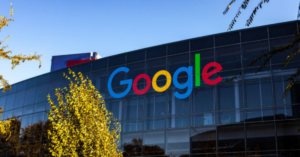Image credit: Pixabay
Newspapers and trade magazines are full of news about the growth of flash delivery companies in the Dutch market in recent weeks. The popularity of home delivery, especially that of food, is growing rapidly. According to research company Kantar, flash deliveries are on their way to reach an annual turnover of €1B by the end of 2022. Meanwhile, quite a few on-demand grocery delivery companies, such as Gorillas, Flink, Getir and Zapp, are active. They promise to be at your door within 10 minutes with your order. And in many cases, they live up to that promise.
Flash deliverers work from so-called “dark stores,” a term akin to “dark kitchens” where meals are prepared only for home delivery. The popularity – or perhaps at the moment it is just the huge media attention – is enormous, and venture capitalists are investing billions. But whether it’s viable in the long run? I have my questions about that.
Get to know the amazing finalists here
After all, what gap do flash delivery companies fill in the market? It remains difficult to determine. I also wonder what added value flash deliveries will bring? I still prefer to walk into a store. The Netherlands has a dense network of supermarkets and speciality stores that make grocery shopping easily accessible. To be fair, I am on the older side and like to plan my shopping.
Online grocery sales increased by 50% to €2.7 billion in 2020, according to Food Service Institute Netherlands. The online share of supermarket sales thus increased from 4.4% to 6.2% during the Covid-19 crisis. Further growth in online share is also possible in the post-corona era. Recent entrants into the grocery delivery market, such as Crips, Gorillas, Flink and Getir, provide additional impetus for this.
I do understand why there has been a heavy investment in flash deliverers in recent months. Technology is sexy and you see flash delivery companies expanding at a rapid pace. Investors want to get there early and benefit from it. Who knows, maybe such a company will be the next Uber or Facebook?
On-demand grocery delivery expensive business model
Still, I doubt the future viability of flash delivery. I think it is a very difficult and expensive business model. Think about having several hubs in cities and paying rent. But there are other challenges as well. Filling enough orders is one of them. For the final process to run, getting enough orders is a requirement to give the pickers and delivery people enough work.
Another requirement is to be able to handle the spikes that come with on-demand shopping. I can imagine orders pouring in on a beautiful summer’s day when people are just finishing their last case of beer. As a flash deliverer, you have to be able to deal with this. And good locations for the company and for the environment are not unimportant either. I already understood that it can be difficult to supply ‘dark stores’ because, in some cases, they are difficult for trucks to reach. This can cause all sorts of nuisances. And I already hear and read about the many bicycle deliveries that make the city unsafe by racing over sidewalks and ignoring traffic lights.
Negative effects of flash deliveries require a solution
Thus, this increasing popularity also has a downside. The dark stores for flash delivery have negative effects on the living environment. A solution must be found for this. Municipalities do not have enough possibilities to regulate flash deliveries from dark stores. This is because dark stores fall between supermarkets and regular stores.
There are two possibilities:
1. Consultation between flash delivery companies, municipalities and residents must provide a solution.
2. Flash delivery companies move to industrial sites.
The latter would mean that the promise of a 10-minute delivery time would be lost. And thus a major advantage of this service disappears. This raises the question of the future of flash deliveries.
One-day wonder or here to stay
I compare the current popularity with the early days of the Hello Fresh and Marley Spoon meal boxes. In the beginning, everyone was talking about them, but over time the market growth leveled off. Only the real meal box diehards remained. I now hear the same enthusiastic stories about flash delivery.
For the future potential of this, the Netherlands has many small households such as singles or couples without children, who live differently and plan less. I think flash delivery can connect well with this niche for whom convenience is important and a higher price tag is not an issue.
Therefore, I do expect something of flash delivery to stick. I do see existing parties jumping on this phenomenon. That a supermarket chain starts it or a company like Thuisbezorgd, which already has cyclists on Dutch streets. The collaboration between Jumbo and Gorillas is an example of this. The future will tell.
How partnering up with Salesforce helped him succeed!










